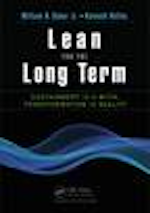We all know that we need to hire the best and brightest and challenge them to be creative and help our companies gain a competitive edge. After all, a company is designed to provide valuable products and services to a customer base that keeps coming back because of the value received.
These best and brightest also have a new millennials’ view of companies and their expectations—they don’t expect to stay unless all their goals and aspirations are being met. Their expectations may not be in alignment with companies that have been around for years.
In today’s economy and infrastructure a new idea can blossom almost overnight and make millionaires or billionaire’s of the owners, as well as the original staff that believed and made the miracle happen. Facebook, Google, Amazon and Elon Musk’s ventures are recent examples which followed earlier icon examples like Microsoft and Apple.
So a question is “How can an established manufacturing company create and nurture the same creativity, excitement and dedication as a start up?"
The American dream is alive and well in these types of “Creativity matches customer's desires” bubbles. So a question is “How can an established manufacturing company create and nurture the same creativity, excitement and dedication as a start up?”
Some of the creativity enhancers are those that we have heard about, such as ping-pong tables, workout rooms, flex time and casual wear. These are meant to create an environment of creativity by supporting hard work and hard play—all at the work site. This is much harder in giant companies because the historical way of doing things is: “Do what I say until you put in your time, and then someone will listen to you.”
This just doesn’t work anymore.
The millennials also may have unrealistic expectations and want to make a difference immediately. They may think that they will be a vice president within a couple of years. They also are more attuned to Maslow’s higher levels of need since the lower levels seem to already be satisfied. Environmental awareness, social issues and safety come to mind. All this feeds their ”making a difference in the world aspirations.”
So how do we approach this major gap in companies’ expectations and new employees' expectations?
... we have to realize and accept that our employee’s brains are the most valuable asset we have."
First, we have to realize and accept that our employee’s brains are the most valuable asset we have. There is a shortage of qualified graduates and technicians, so it is important that we do not create “intellectual waste” by not fully challenging them. The high cost of recruiting and training is a major stumbling block, so once they are employees we need to pay close attention to their personal goals.
Second, we must use this brainpower to think about the customer and their current and future needs, expectations and even needs that they don’t yet know they have! The new hires in professional jobs have greater capacity than 20 to 30 years ago; they can readily adapt to standard work, but must be challenged to think, invent and build new systems that are flexible and adaptive to the fast changing markets. After all, they are the new customers, are closest to the market needs and have those big aspirations to make a difference in new ways.
Third, we must realize that our competitive advantage is our intellectual capital, not the elements normally put on our corporate balance sheets like inventory, buildings and equipment, for these have a fleeting lifespan in today’s world. The key asset we have is the tacit knowledge we have tucked away in our brains, generally estimated to be about 80% of our corporate knowledge, and which translates to our competitive advantage. The other 20% is the knowledge that is written down and recorded in drawings, patents, standard procedures and process documents.
This tacit knowledge must rapidly flow and be shared between expert mentors, middle managers and new employees to be competitive. The culture must promote fast learning and leveraging old proven concepts with new ideas. It’s all about the speed of change.
This type of culture is ideal for the new millennial employees because it lowers barriers in the company and puts the customer needs first.





